Bonsai, Bonsai Focus Magazine, Chia sẻ kinh nghiệm
Oriental hornbeam (Carpinus orientalis) – Cây Trăn Phương Đông – một loài cây thú vị cho Bonsai – Marija Hajdic
Nguồn: Tạp chí Bonsai Focus English Edition T7/T8 2019
Dịch và biên tập: Dũng Cá Xinh (10/08/2021)
English
Text and photography: Marija Hajdic
About ten years ago, oriental hornbeam was an unknown species of bonsai. Here, I present the development of one of the best of its kind, a very imposing hornbeam called ‘The Emperor’. Quite unlike Andersen’s fairy tale, the Emperor here, has waited 10 years for its new ‘clothes’, but now he is all dressed up and everybody can see it. The tree has even won an award at the XX Trophy in Belgium
Oriental hornbeam (Carpinus orientalis), is a deciduous tree or shrub native to the south-east of Europe, the Pontic region and western Asia. It is found in southern parts of Italy, Balkan Peninsula, Turkey, Syria, Caucasus and northern Iran, usually appearing at lower altitudes, or on southern slopes up to 1,300 m in Europe, but growing at over 2,500 m in the Caucasus Mountains.
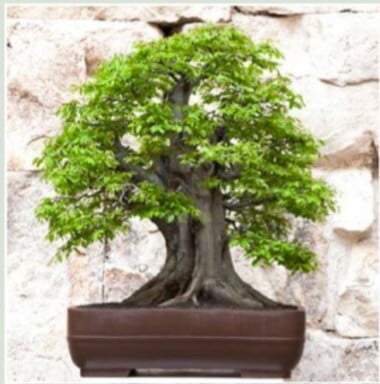
In eastern regions it grows at higher altitudes tolerating lower temperatures in more moderate climates. In south-east Europe it is a typical element of the sub-Mediterranean vegetation, and can also be found in the inner regions with continental influences (colder winters).
Its leaves are ovate-elliptic with evident veins, serrate margins and short petioles. The leaves are much smaller than with other Carpinus varieties, so it’s very suited to bonsai.
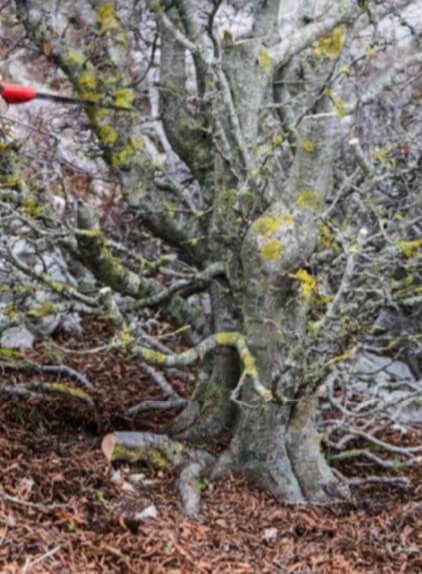
The tree blossoms in April. Male flowers are dense with short catkins, whereas the female catkins are a bit longer with leaf-like unlobed and coarsely toothed bracts, which cover the flowers and later the nuts.
The root system is very well developed, so Carpinus can easily penetrate into the cracks in rocks, and can survive in harsh conditions.
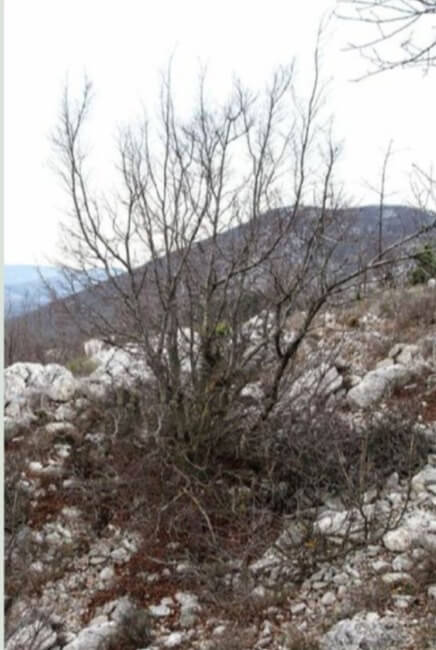
How to grow a hornbeam
The main idea of styling this tree is to make a bonsai that looks like a very old tree from nature and it is a great example of naturalistic bonsai styling. There is no triangle, or a flat horizontal clouds. The crown is roundish, irregular and also a bit transparent so that an observer can see not only the trunk, but also the branches. Oriental hornbeam tolerates a transfer from nature very well. So long as you follow certain rules, the surviving rate is 100%. One of the most important rules isthat if you cannot save the root ball while collecting, you have to cut the majority of small branches with buds. This way you will be able to keep all the primary branches and trunks in the crown. This is a good way to avoid problems. If you don’t have good roots and the crown is too big with many buds, it’s quite possible that the tree will not be able to support it. So, it’s better to choose and cut off what needs to be cut and not to wait for the tree to balance itself.
Primary branches
When the starting material has only primary branches and trunks, there is a task in front of you, a task of building the crown and it will take about 5-10 years. Hornbeams react very well to pruning and they ramify easily. After collecting, many of the new buds appear on primary branches. New branches develop from all the buds. The first season after collecting, I let the tree grow freely without cutting anything. Then, in winter, it was necessary to prune back every branch leaving 2-3 buds, to get the ramification denser.
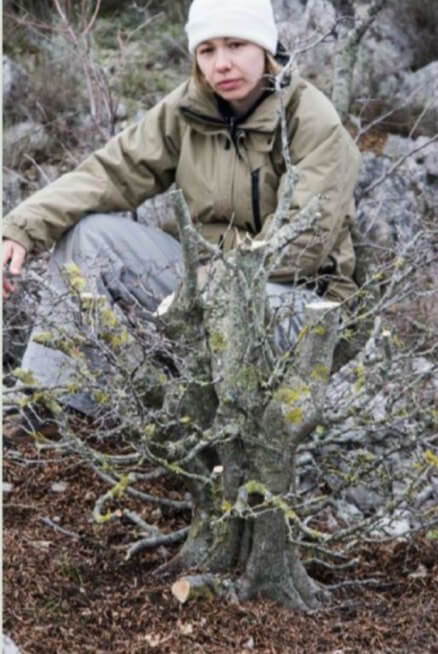
I usually cut back the new growth twice during vegetation, but be aware I live in a sub-Mediterranean climate where a vegetation period is longer. When the shoots reach 50 cm, I cut back for the first time (May/June), and the second time at the beginning of August, so that new shoots still have time to grow until dormancy. These two summer trimmings are fast, almost without looking at the details. In winter, while leaves are off, I do a detail cutback (to prepare the tree for the next growing season). Also, this is a good time for wiring. Hornbeams grow fast so you need to be careful because wire usually cuts in during the next growing season if you do not remove it in time.

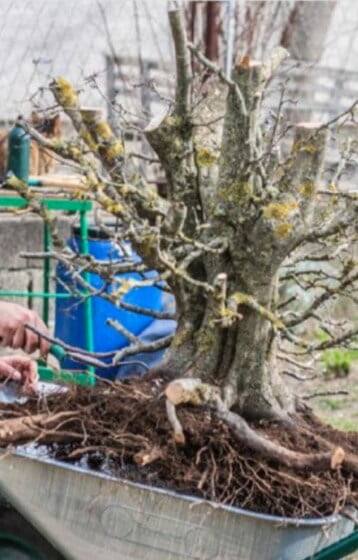

Carpinus – HUSBANDRY
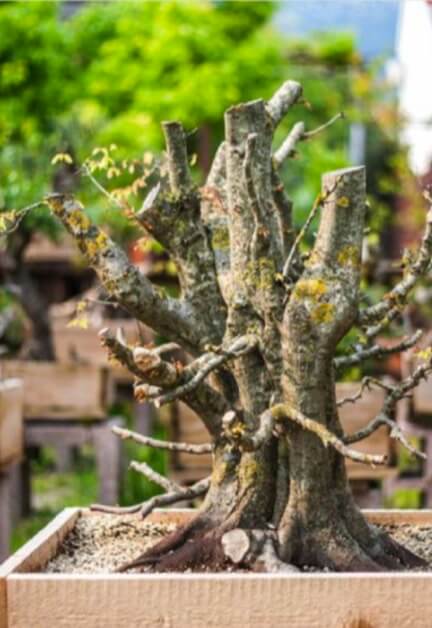
- Propagate: With cuttings, or air layer.
- Placement: Protect pot and branches when heavy frosts occur. Likes full sun, but put in semi shade during hot summer periods. New sprouting foliage can suffer sun and wind burn.
- Pruning: First allow new shoots to grow to five or six leaves. Once leaves have hardened off you can prune back the strong areas, like the top and tips of branches. Prune to two leaves. Don’t prune weaker branches.
- Repotting: In normal cases, every two to three years. Pot older trees up to every four years. For a better root development use a good draining soil mix with smaller particles.
- Watering: During winter keep moist, but in the growing season don’t let it dry out. Use rain water, not chalky tap water.
- Wiring: Can be wired during dormant period, use aluminium and apply loosely in order to avoid it biting into the rapidly thickening young branches.
The technique
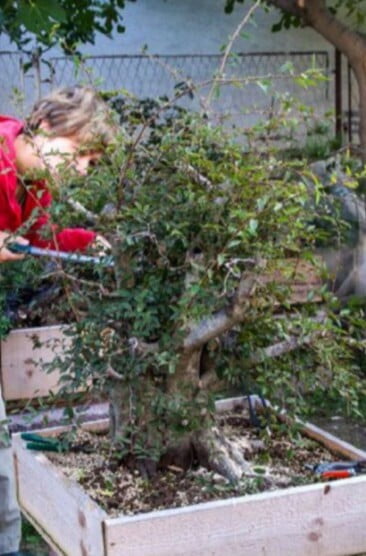
All trees grow faster on top, slower at the lower positions of the crown. To achieve a more natural look of the crown, we need thicker lower branches, thinner upper branches. We achieve this by cutting the upper parts of the crown more often and leaving the lower parts of the crown to grow without cutting during the period of vegetation. This way, the lower branches are elongating and getting thicker at the same time. In winter, we cut off the parts of the branches that are growing out of the silhouette. This is the technique that I have applied.
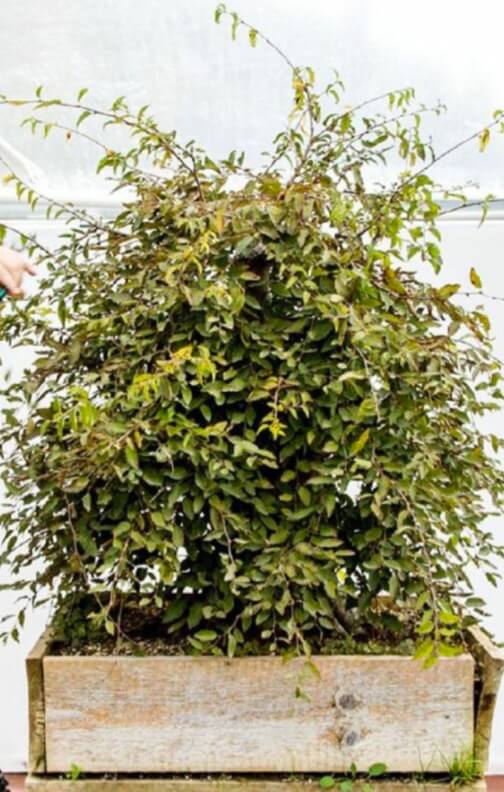
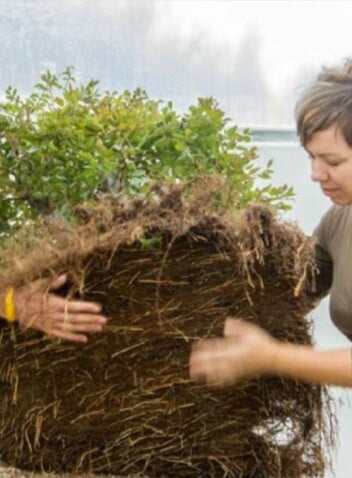
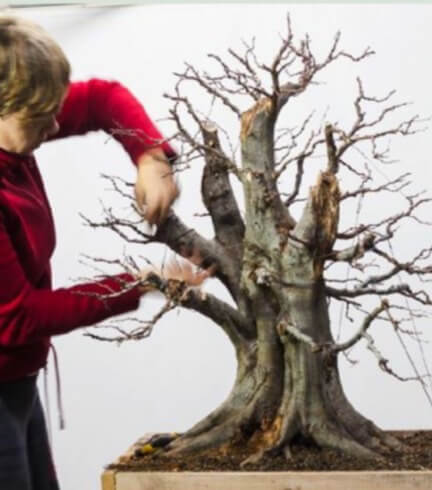
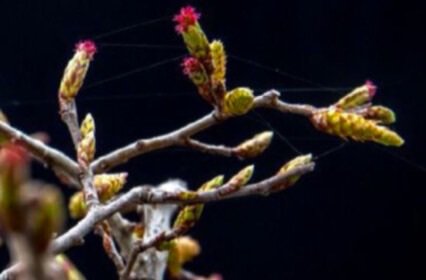
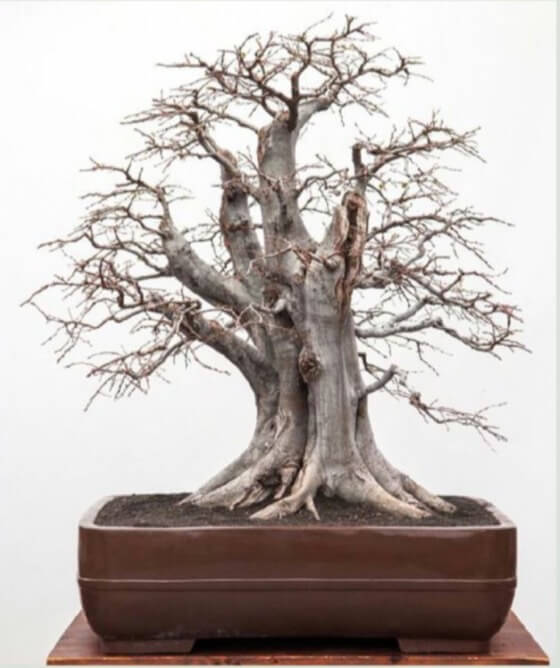
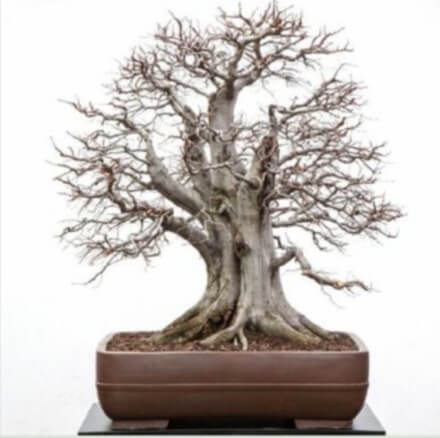
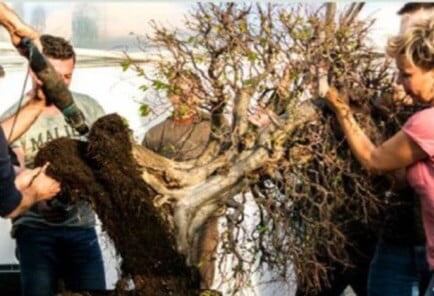
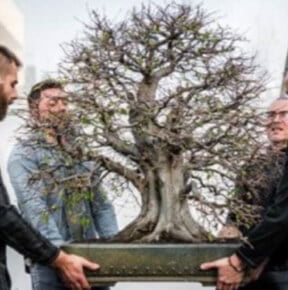
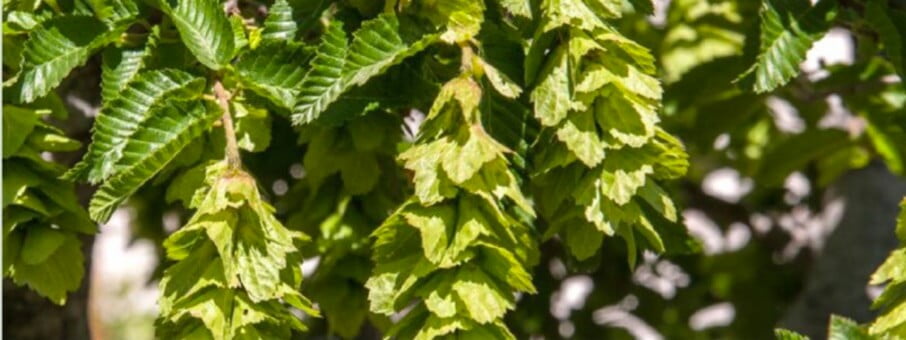
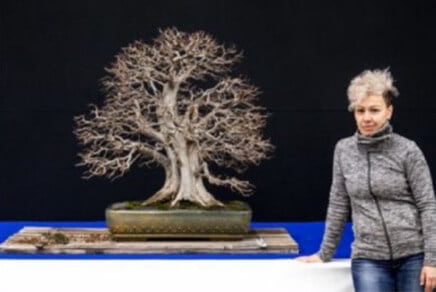
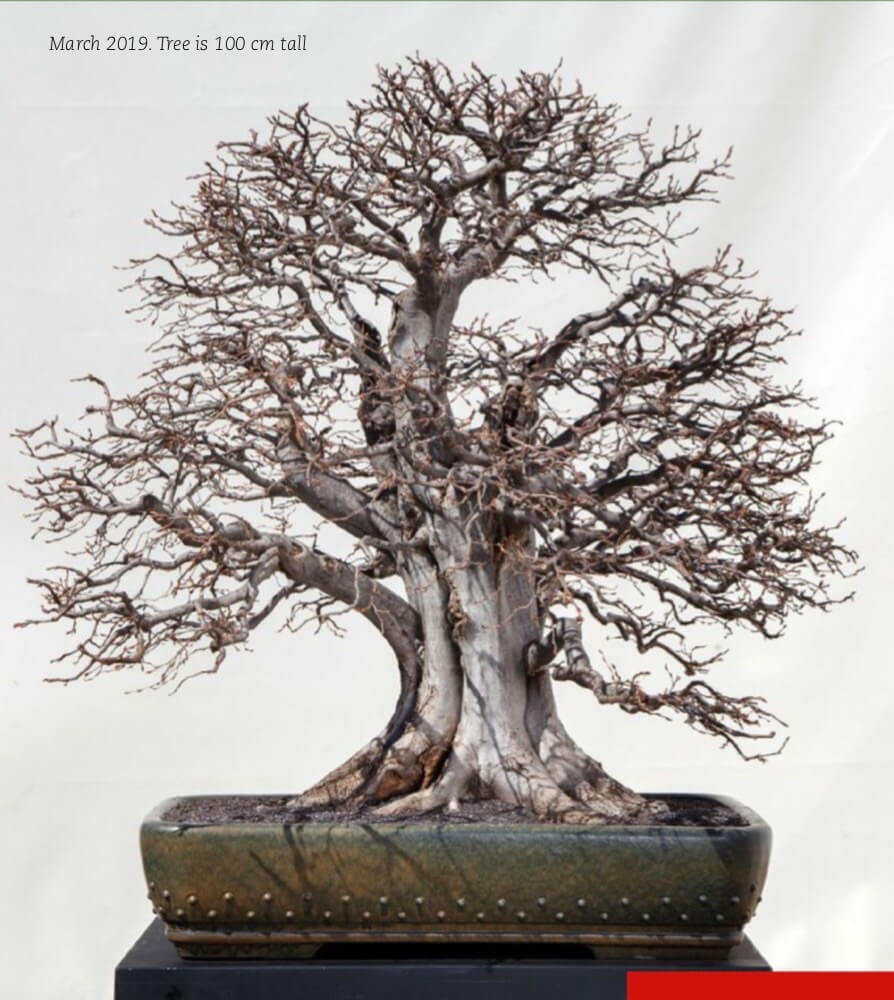
Tiếng Việt
Bài và ảnh của: Marija Hajdic
Cách đây khoảng mười năm, Cây Oriental Hornbeam (Trăn Phương Đông) là một loài Bonsai ít người biết đến. Ở đây, tôi xin phép trình bày quá trình phát triển của một trong những cây đẹp nhất, một cây Trăn Phương Đông oai phong được đặt tên là ‘Hoàng đế’ (The Emperor). Hoàn toàn không giống như câu chuyện cổ tích của Andersen, Hoàng đế ở đây, đã phải đợi 10 năm để có “bộ quần áo” mới, giờ đây ông ấy đã khoác lên và mọi người đều có thể ngắm nhìn. Cây thậm chí đã giành được giải thưởng tại sự kiện XX Trophy ở Bỉ (Belgium)
Cây Trăn Phương Đông (Oriental hornbeam, Carpinus orientalis) là một loại cây rụng lá hoặc cây bụi có nguồn gốc từ Đông nam châu Âu, vùng Pontic (Pontus hay Pontos là một khu vực trên bờ biển phía nam của Biển Đen, nằm ở khu vực phía đông Biển Đen của Thổ Nhĩ Kỳ ngày nay.) và tây Á. Nó được tìm thấy ở các vùng phía nam của Ý, bán đảo Balkan, Thổ Nhĩ Kỳ, Syria, Caucasus và bắc Iran, thường xuất hiện ở độ cao thấp hơn hoặc trên sườn phía nam lên đến 1.300 m ở châu Âu, nhưng phát triển ở độ cao hơn 2.500 m ở dãy núi Kavkaz.

Ở các vùng phía đông, nó phát triển ở độ cao lớn hơn nên chịu được nhiệt độ thấp hơn ở những vùng khí hậu ôn hòa. Ở Đông Nam Châu Âu, nó là một yếu tố điển hình của thảm thực vật cận Địa Trung Hải, và cũng có thể được tìm thấy ở các vùng bên trong chịu ảnh hưởng của lục địa (mùa đông lạnh hơn).
Các lá của cây Trăn Phương Đông có hình trứng với các đường gân nổi rõ, mép có răng cưa và các cuống lá ngắn. Lá nhỏ hơn nhiều so với các loài Carpinus khác, vì vậy nó rất thích hợp làm cây cảnh.
Cây ra hoa vào tháng Tư. Hoa đực dày đặc và ngắn, trong khi những bông cái dài hơn một chút với những lá bắc không có răng cưa và không giống như những chiếc lá, bao phủ những bông hoa và sau đó là những quả hạch.
Bộ rễ phát triển rất tốt nên Carpinus có thể dễ dàng xâm nhập vào các khe nứt trên đá, và có thể tồn tại trong điều kiện vô cùng khắc nghiệt.


Cách trồng cây Trăn (Hornbeam)
Ý tưởng chính của việc tạo kiểu cho cây này là tạo ra một cây Bonsai trông giống như một cây cổ thụ từ tự nhiên và nó là một ví dụ tuyệt vời về kiểu dáng Bonsai theo phong cách tự nhiên. Không có hình tam giác, hoặc một đám mây phẳng ngang. Tàng cây có hình tròn, không đều và cũng khá thoáng để người quan sát không chỉ có thể nhìn thấy thân cây mà còn có thể nhìn thấy cành nhánh. Cây Trăn Phương Đông (Oriental hornbeam, Carpinus orientalis) chịu được sự chuyển giao từ thiên nhiên rất tốt. Vì vậy, miễn là bạn tuân theo các quy tắc nhất định, tỷ lệ sống sót sẽ là 100%. Một trong những quy tắc quan trọng nhất là nếu bạn không thể cứu bóng rễ trong khi thu hái, bạn phải cắt phần lớn các cành nhỏ có chồi. Bằng cách này, bạn sẽ có thể giữ tất cả các cành và thân chính trên tàng cây. Đây là một cách tốt để tránh các vấn đề phát sinh. Nếu bạn không có bộ rễ tốt và ngọn quá lớn với nhiều nụ, rất có thể cây sẽ không thể chống đỡ được. Vì vậy, tốt hơn hết bạn nên chọn và cắt bỏ những gì cần cắt chứ không nên đợi cây tự cân bằng.
Cành chính
Khi cây nguyên liệu ban đầu chỉ có các nhánh và thân sơ cấp, trước mắt bạn có một nhiệm vụ, chế tạo tàng cây và sẽ mất khoảng 5-10 năm. Cây Trăn Phương Đông (Oriental hornbeam, Carpinus orientalis) phản ứng rất tốt với việc cắt tỉa và chúng phân tán dễ dàng. Sau khi thu hái, nhiều chồi mới xuất hiện trên các cành sơ cấp. Các nhánh mới phát triển từ tất cả các chồi. Mùa đầu tiên sau khi thu hái, tôi để cây phát triển tự do mà không cần chặt gì cả. Sau đó, vào mùa đông, cần tỉa lại mỗi cành để lại 2-3 nụ, để cây phân nhánh dày đặc hơn.
Tôi thường cắt giảm chồii hai lần trong quá trình phát triển, nhưng hãy lưu ý rằng tôi sống trong khí hậu cận Địa Trung Hải, nơi thời gian phát triển của thực vật dài hơn. Khi chồi đạt 50 cm, tôi cắt lại lần 1 (tháng 5/6), lần 2 vào đầu tháng 8 để chồi mới còn thời gian phát triển cho đến khi ngủ đông. Hai lần cẳt tỉa vào mùa hè này đều nhanh gọn, hầu như không cần đi vào chi tiết. Vào mùa đông, khi lá đang rụng, tôi cắt tỉa chi tiết (để chuẩn bị cho cây cho mùa phát triển tiếp theo). Ngoài ra, đây là thời điểm tốt để đi dây. Cây Trăn phát triển nhanh nên bạn cần cẩn thận vì dây thường bị đứt vào mùa sinh trưởng tiếp theo nếu bạn không gỡ bỏ kịp thời.




Carpinus – Cách chăm sóc

- Nhân giống: Giâm cành hoặc chiết cành.
- Vị trí: Bảo vệ chậu và cành khi có sương giá. Cây thích ánh nắng đầy đủ, nhưng nên đặt trong bóng râm bán phần trong thời gian mùa hè nóng bức. Những tán lá mới nhú có thể bị nắng nóng thiêu đốt.
- Cắt tỉa: Đầu tiên cho phép các chồi mới phát triển đến năm hoặc sáu lá. Khi lá đã cứng, bạn có thể cắt tỉa lại những chỗ kho, như đầu và ngọn cành. Tỉa hai lá. Đừng cắt tỉa những cành yếu hơn.
- Thay chậu: Trong trường hợp bình thường nên thay chậu cứ hai đến ba năm một lần. Chậu cho cây già thì thời gian là bốn năm một lần. Để rễ phát triển tốt hơn, hãy sử dụng hỗn hợp đất thoát nước tốt với các hạt nhỏ hơn.
- Tưới nước: Trong mùa đông giữ ẩm, nhưng trong mùa sinh trưởng không để cho cây bị khô. Sử dụng nước mưa, không dùng nước máy.
- Đi dây: Có thể đi dây trong thời gian cây ngủ đông, dùng nhôm và đi lỏng để tránh nó hằn vào các cành non đang dày nhanh.
Kỹ thuật

Tất cả các cây sẽ phát triển nhanh hơn trên đỉnh, chậm hơn ở các vị trí thấp hơn của tàng cây. Để có được một cái nhìn tự nhiên hơn của tàng cây, chúng ta cần các cành phía dưới phải dày hơn, các cành phía trên mảnh hơn. Chúng tôi đạt được điều này bằng cách cắt các phần trên của thân thường xuyên hơn và để các phần dưới của thân mọc lên mà không cần cắt trong thời kỳ cây sinh trưởng. Bằng cách này, các cành bên dưới sẽ dài ra và dày lên cùng một lúc. Vào mùa đông, chúng tôi cắt bỏ những phần của những cành đang mọc quá tàng cây dự kiến. Đây là kỹ thuật mà tôi đã áp dụng.














